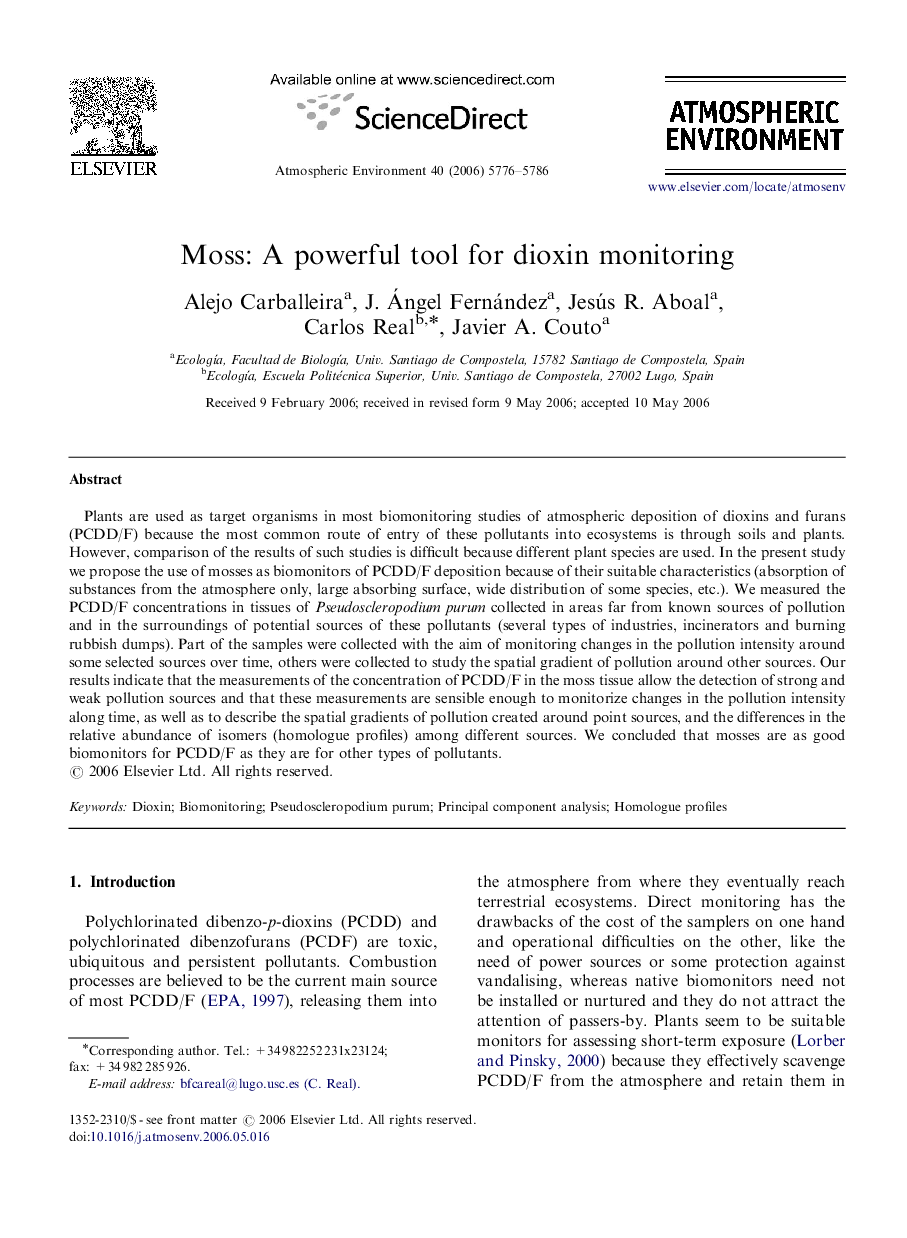| Article ID | Journal | Published Year | Pages | File Type |
|---|---|---|---|---|
| 4444272 | Atmospheric Environment | 2006 | 11 Pages |
Plants are used as target organisms in most biomonitoring studies of atmospheric deposition of dioxins and furans (PCDD/F) because the most common route of entry of these pollutants into ecosystems is through soils and plants. However, comparison of the results of such studies is difficult because different plant species are used. In the present study we propose the use of mosses as biomonitors of PCDD/F deposition because of their suitable characteristics (absorption of substances from the atmosphere only, large absorbing surface, wide distribution of some species, etc.). We measured the PCDD/F concentrations in tissues of Pseudoscleropodium purum collected in areas far from known sources of pollution and in the surroundings of potential sources of these pollutants (several types of industries, incinerators and burning rubbish dumps). Part of the samples were collected with the aim of monitoring changes in the pollution intensity around some selected sources over time, others were collected to study the spatial gradient of pollution around other sources. Our results indicate that the measurements of the concentration of PCDD/F in the moss tissue allow the detection of strong and weak pollution sources and that these measurements are sensible enough to monitorize changes in the pollution intensity along time, as well as to describe the spatial gradients of pollution created around point sources, and the differences in the relative abundance of isomers (homologue profiles) among different sources. We concluded that mosses are as good biomonitors for PCDD/F as they are for other types of pollutants.
